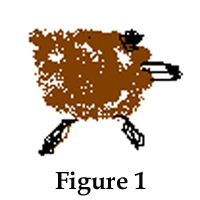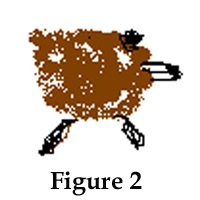This is not primarily an article about birds, although I would hope that the anecdotal information about the birds and the accompanying artwork will add, in its own way, to the wealth of scientific information already available. Indeed, this work is only possible because it rests on the shoulders of all those who have gone before. I pay particular respect to Birds of North America, one of the Golden Field Guide Series published by Golden Press, New York. It is an excellent and affordable tool for anyone interested in the watching and understanding of the creatures of the air around them. Rather, this is really much more a travelogue of sorts, a work more designed to showcase an interesting aspect of a location -- in this case, the Central Valley of California.
I grew up in Pennsylvania, a state with abundant forests. Although the great hardwood forest that at one time covered most of the eastern seaboard is gone, a younger but still vibrant forest of oak, maple, and of course the state tree, hemlock, has taken its place. In fact, according to the Pennsylvania Department of Conservation and Natural Resources, forests still cover 62% of Pennsylvania's land.
I don't happen to know what percentage of California is covered by forest, but I do know that in the Central Valley, there are no forests. The Valley is a 450 mile long and 60 mile wide area of flat (really flat) lands. We have a long, hot dry summer when it doesn't rain at all, and a short wet winter when it doesn't rain much. We get about 14 inches of rain a year. (Where I lived in Pennsylvania gets 40 inches of rain and 41 inches of snow in an average year.)
So the logic in my mind was that if I lived in an area that had lots of water and more trees than you could shake a stick at, there would be lots of birds. Birds. Trees. Seemed like a logical connection. On the other hand, if I lived in an area that was hot and dry and you have to make a concerted effort to water what few trees you have so they don't die, there would be fewer birds. Besides, we have all heard the stories of how California has paved over the environment in order to satisfy its vast need for malls and fast food restaurants.
So it was a pleasant surprise to find that our tiny backyard (thanks in no small part to my wife's green thumb) is a veritable haven for not only a large number of birds, but also for a surprising diversity of species. This article then, is my ambassadorial attempt to introduce to you the Birds of Ripon, California. Each week in this space, I will share with you my field drawings and commentary based on careful observation of the one of the diverse species of birds that make our backyard such a delight. Enjoy!
The Sparrow
This week's bird is the sparrow. Everybody's gottem. Trash birds by most standards. But the next time you rush to the window to look at a bird and you say "oh, that's just a sparrow," think about what you saying. First, there are dozens of different kinds of sparrows. There is the non-native House Sparrow (see Figure 1),  but the Golden Field Guide also lists thirty-two other kinds of sparrows and mentions that this is not an exhaustive list. Second, they really are pretty birds if you take the time to look at them. Admittedly, they are a bit drab, having for some reason chosen to array themselves in a variety of shades of brown. Just brown. I knew a principal of a school that did the same thing with paint for the classrooms. Everything was painted brown or light brown. He said he did it so that the dirt wouldn't show, yet the result of his schema was that everything looked dirty all the time. Maybe the sparrows do it for the same reason. Maybe they went to that school.
but the Golden Field Guide also lists thirty-two other kinds of sparrows and mentions that this is not an exhaustive list. Second, they really are pretty birds if you take the time to look at them. Admittedly, they are a bit drab, having for some reason chosen to array themselves in a variety of shades of brown. Just brown. I knew a principal of a school that did the same thing with paint for the classrooms. Everything was painted brown or light brown. He said he did it so that the dirt wouldn't show, yet the result of his schema was that everything looked dirty all the time. Maybe the sparrows do it for the same reason. Maybe they went to that school.
Aside from the ubiquitous House Sparrow, our yard is inundated during the winter months with the White-Crowned Sparrow (Figure 2).

The White-Crowned sparrows fly on in from the north, probably Canada, and are our indication that the seasons have changed. Compare Figure 1 and Figure 2 noting the subtle differences in the pattern of coloration. It can be quite a rewarding challenge to become familiar with the unique markings of the three dozen or so sparrow species.
Next Week: The Junco

The Piker Press moderates all comments.
Click here for the commenting policy.